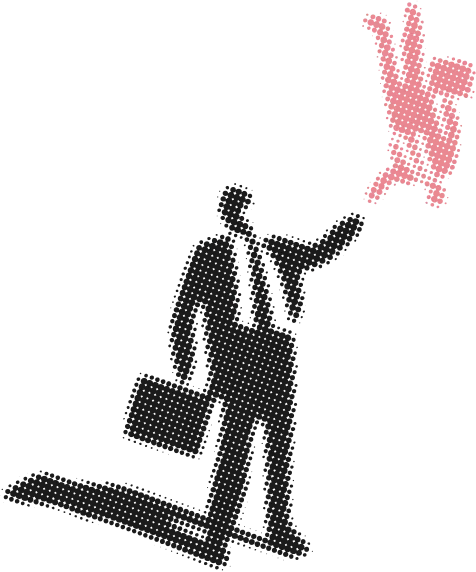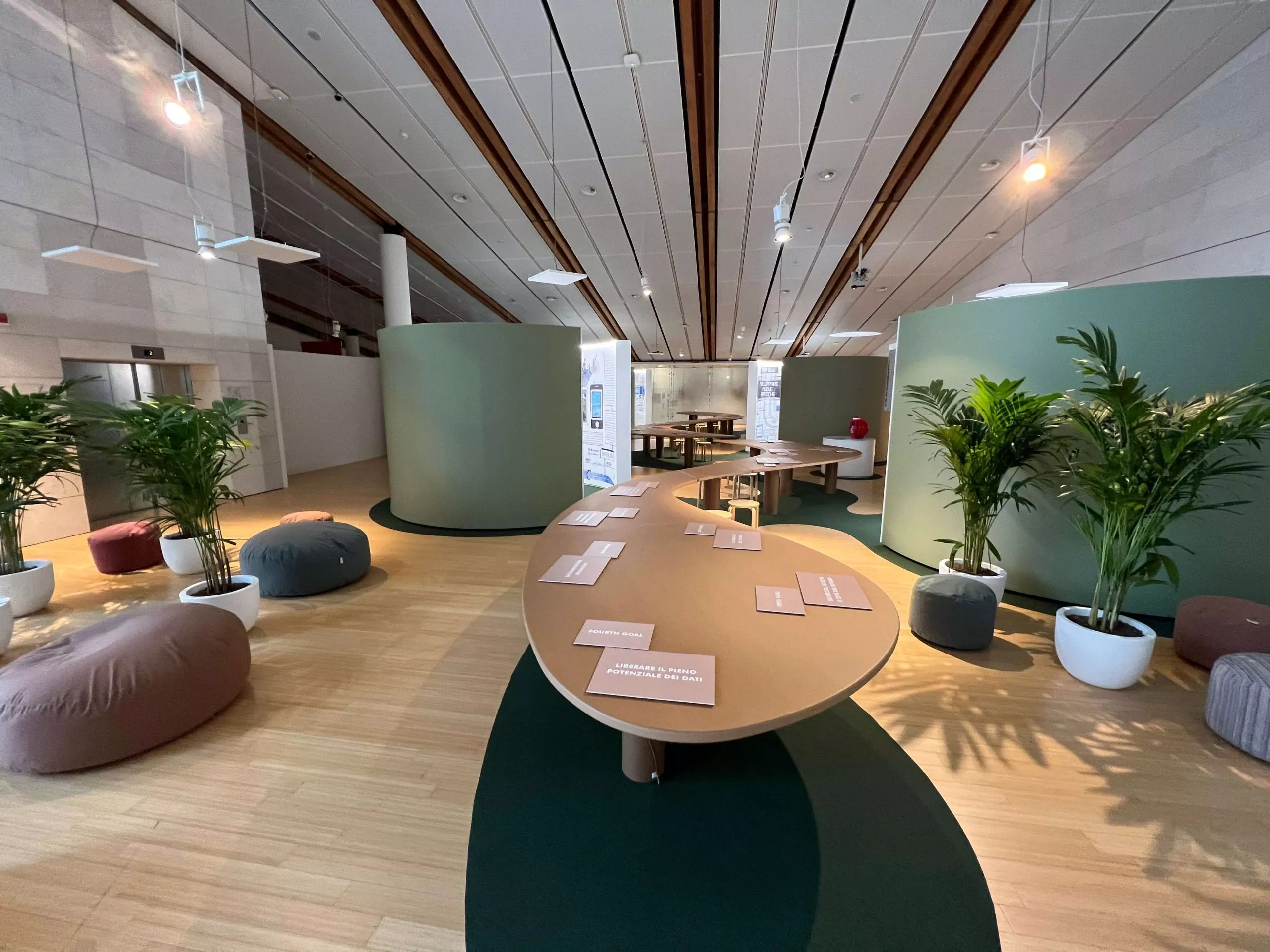INTRODUCTION
“2050: HOW DO WE GET THERE? Sustainable mobility, cleaner, faster, safer and for all” is the temporary exhibition that tells the challenges and prospects of the European Strategy for Sustainable Mobility. Inaugurated on 22 December 2021 at the Muse – Trento Science Museum, it will be possible to visit it until 26 June 2022.
On this occasion, our intervention consisted in the creation of a narrative system developed to integrate with the project conceived by the studio Mario Cucinella Architects, which includes an installation made with yarn regenerated from fishing nets and recycled waste materials.
In the approach chosen to communicate, value and reflect on the theme of ecological transition and the important goal of reaching 2050 with zero-emission mobility, we considered it essential to focus on creating an engaging and interactive experience. As the information passes from one neuron to another through the synapses, so visitors can move within the exhibition, following the paths that link the information and details related to the relationship between mobility and sustainability in the European, interregional, and local contexts.
“So here’s how a sign drawn by a great architect becomes a narrative thanks to our small contribution.”
Cit. Jader Giraldi
DEVELOPMENT OF PROCESSING AND CONCEPT
The educational path on sustainable viability is a space of knowledge in which sensory stimuli blend, interacting with the visitor until arousing a real desire for the future. The contents of the route have been positioned according to a simple logic: a long central table with the main objectives of the European strategy and on the sides 6 deepening Hubs, multimedia containers in which the reasoning is contaminated by counterpoints that alternate historical elements to future visions.
The narration has a complex approach (cum-plexus), the articulation and the temporal crossing become the interpretative expedient of the theme of the exhibition and, in general, also of the society. The visitor moves between present, past and future, seen in their different forms: possibilities, challenges and fears.
As a result of this reasoning, the use of the Hubs is not to be understood as a subdivision into separate rooms, but rather a series of doors to access containers of knowledge and experience. Each contains a focus on a specific theme of sustainable, resilient and intelligent mobility, and a temporal smart grid that creates the connections between its past experiences and the possibilities of the future.
WHAT ARE THE HUBS
The story inside the Hub develops following the structure of a pattern that, designed to satisfy all the perceptive sensibilities of the different visitors, is repeated in each of them. The reproduction of this visual system, assisted by the presence of graphic icons, makes it easy to recognize the different learning formats distributed within the exhibition and shows its functionality.
The walls of these spaces are large sheets in which are collected notes of knowledge that lead the visitor to make his own synthesis on the concepts expressed, to ask questions about the future that awaits us and at the same time begin to relate to the changes that will be introduced in his behaviors and habits to encourage the processes of sustainable viability.
In addition to the graphic system, different experiences have been designed to guide and inform the visitor, created with the application of different technologies and scenic expedients: interactive video and screens, emotional sound showers, a dynamic diorama, models and temporal-space social platforms.
After taking the visitor back and forth in time, we wanted to close the exhibition by repositioning it in today’s context, the now and here: the firm point on which to lean to launch its action towards the future.
THE NEWSROOM AND THE WALL
The Newsroom, placed as a penultimate experience, is the element of connection with today’s news related to the theme; a window opened from within the exhibition on what you are writing in the world during the time of its development. Within the path this is the moment of greater awareness, a responsible admission that the subject matter is not only still to be written but is being written now.
Finally, the visitor is called to act actively by participating in a great work of collective investigation at the end of the journey: The Wall, a large wall of more than 6 meters on which, unrolling a colored cotton thread, you connect the acquired learning to opinions and views, inviting those who participate to visualize their commitment to the themes of the exhibition.
The Wall offers the Museum and the community an immediate return, at the end of the journey, of the relationship of five generations of citizens with this theme. This final format represents the call to personal commitment and responsibility: this is the space of action, the measurement of individual impact and sharing with the community of a commitment taken in person.


















IMG_7579
01
–
19
CONCLUSIONS
Past, present and (above all) future are the times of the exhibition, cyclically interconnected by space-time synapses.
What is a synapse?
A path in the forest of memory opened with the axe and activated by a vision.
This is the suggestion that led us to develop the narrative scheme of the exhibition, tracing the map of a journey through the new challenges and strategies that affect the theme of sustainable mobility, from the international to the local, from the community context to individual involvement.

